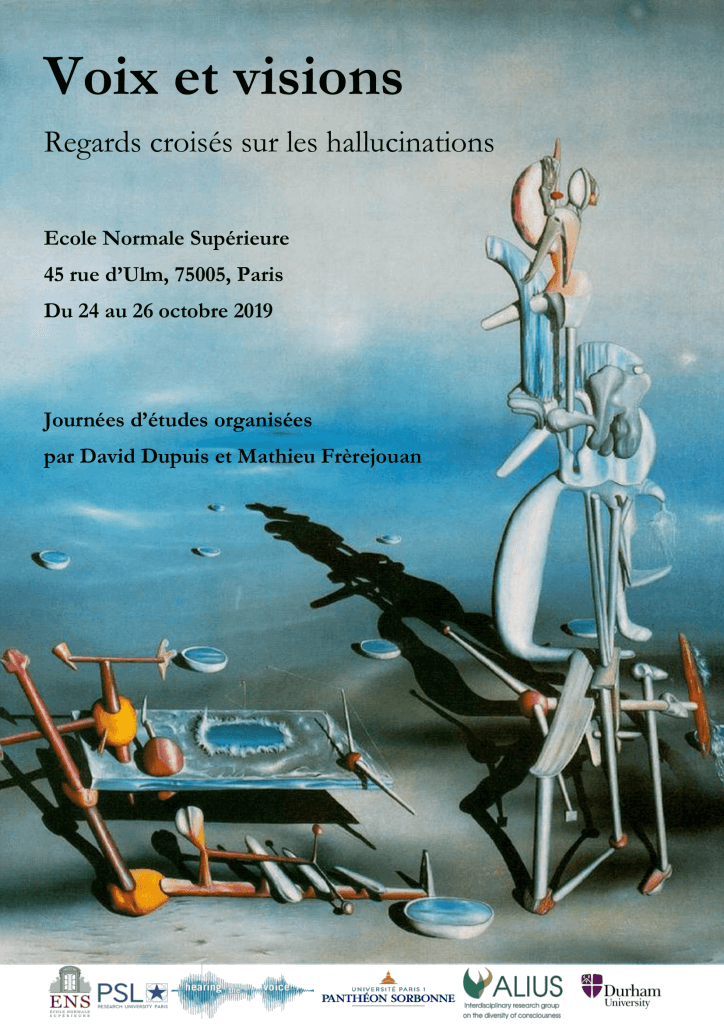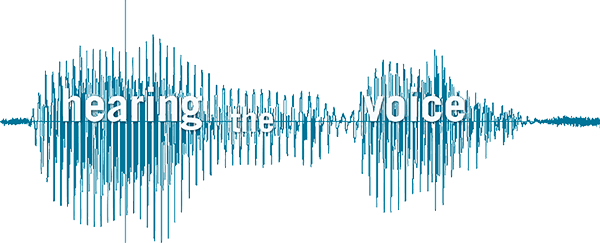Symposium organised by David Dupuis (Durham University/Hearing the Voice) and Mathieu Frèrejouan (Paris I-Sorbonne University)
24-26 October 2019 | Ecole Normale Supérieure 45 rue d’Ulm | Paris | France

In contrast, the terms of voices and visions, which refer in the West to a period before the advent of psychiatry, have continuously been mobilized in order to qualify the hallucinatory phenomenon outside a psychopathological perspective (Shanon, 2002), or even in reaction to any form of pathologization (Romme & Escher, 1993). Beyond a simple question of vocabulary, looking at ‘voices’ and ‘visions’ is therefore an attempt to free oneself from the medical tradition to approach from other perspectives what the subject says ‘hear’ or ‘see’. This ‘other discourse’ has also been supported by historical, anthropological and philosophical approaches, which have seen it as something other than a ‘perception without object’. Without denying the methodological divisions that traditionally distinguish these disciplines, these days aim to bring them together around their common desire to approach voices and visions beyond the medical perspective. Thus, from a comparative perspective, it will be necessary to document the different modes of ‘socialization of hallucinations’ (Dupuis, 2019) – i.e. the vectors by which collectives inform their content, their symbolic function and the relationship that is maintained with them – in order to identify and question the relationships that human societies have with hallucinations and what the latter reveal to us of the societies that implement them.
First of all, historians must have emphasized the institutional, theological or aesthetic functions that voices and visions may have played at different times, but also to have proposed another history of psychiatry and psychology (Carroy, 2012) which, far from being limited to the pathogenesis of hallucinations, explores its relationship with dreams (Maury, 1861) or psychotropic substances (Moreau de Tours, 1845).
Sociology and anthropology have shown that, far from being reducible to the biological and psychological dimensions to which the medical perspective is confined, ‘voices’ and ‘visions’ constitute true social facts (Durkheim, 1894). The meaning and place attributed to them originate outside individuals, in collective ways of doing and thinking. In this perspective, hallucinations can be approached as the product of ‘techniques du corps’ (Mauss, 1936) that reveal in a particularly prominent way the articulation between the individual and the collective.
This desire to contextualize ‘voices’ and ‘visions’ can finally be found in contemporary philosophy which, after having long reduced hallucination to a sceptical problem – are our perceptions true? -now emphasizes that ‘what plays a role in the hallucination, as a general rule, is not the dubious truth of the perceived, but its reality’ (Benoist, 2017). In this sense, returning to ‘voices’ and ‘visions’ means abandoning the traditional questions of the philosophy of perception, to question the way in which hallucinations participate in perceived reality through their epistemic (Gonzalez, 2004), aesthetic or pragmatic (Thomas & Leudar, 2000) functions.
What place is given to ‘voices’ and ‘visions’ by the human societies across time and space? Through what techniques and for what purposes do collectives seek to induce, control or eliminate them? What does their treatment reveal about the social, symbolic, and economic infrastructures of a collective? Through which epistemic, aesthetic or pragmatic functions do they participate in the institution of a common reality? It is to these questions that these study days will attempt to formulate answers, through a dialogue between anthropologists, historians and philosophers.
The programme can be downloaded here.
Free to attend and no registration necessary. For more information, please contact David Dupuis via email.
